Many people are looking for ways to better soundproof their home. What you might not realize is that there are some indoor plants that are good at absorbing sound. You might be wondering if they work, so I did a little research.
What are the best sound absorbing indoor plants? The indoor plants that work best at absorbing sound are:
- Ferns
- Baby’s Tears
- The Peace Lily
- The Rubber Plant
- The Weeping Fig
- Norfolk Island Pine
- The Fiddle Leaf Fig
- The Areca Palm
- Janet Craig
- The Money Tree
Plants will effectively help absorb sound in your home. I was skeptical at first, but I decided to experiment with these plants in my house to see if they made a difference with sound absorption. I was pleasantly surprised by what I found.
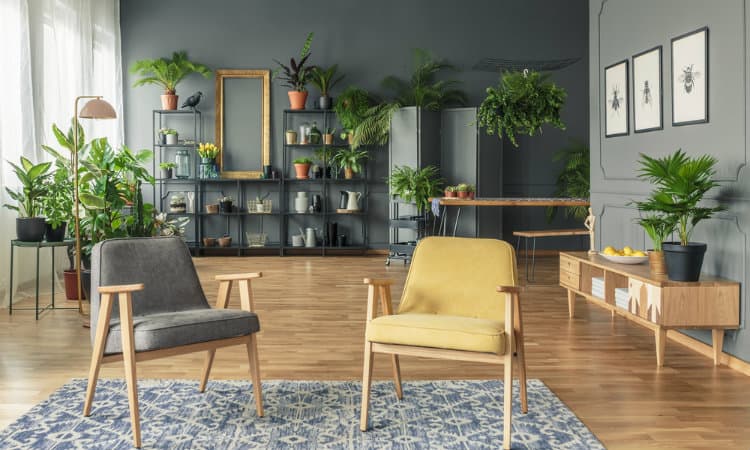
Do Plants Help to Absorb Sound?
There’s quite a bit of research on the subject, but the short answer is yes. The flexible and porous nature of indoor house plants acts as natural sound reducers.
There are three ways that house plants can reduce the sound in your home or office: deflection, absorption, and refraction.
While looking at the research surrounding the issue, I found that most people don’t understand the sound absorbing benefits of houseplants. However, they really do help with absorbing sound.
I found out that plants, depending on how many and their placement, can absorb up to 50% of the sound energy being produced in your home or office. You heard me right; I said 50%. That’s quite a reduction.
Plants can also be used for sound reduction outside. For more information please see our article, How to Reduce Traffic Noise in Your Backyard.
How Plants Reduce Indoor Noise Levels?
As I mentioned above, plants reduce noise levels through three different methods: deflection, absorption, and refraction.
- Deflection – Sound waves tend to bounce around off hard surfaces. That’s where all that added noise comes from. Walls are rigid and will amplify sound, while plants are flexible and help to deaden the sound by breaking up the sound waves into other forms of energy.
- Absorption – Plants are great at absorbing sound because of the leaves, branches, and wood. Wood is a great sound absorber. Have you ever walked through a forest and been amazed at the silence? That’s because the trees are absorbing all the ambient noise.
- Refraction – Refraction is taking away the echoes of the sound bouncing off the hard surfaces. Plants will help to refract this noise and eliminate the echoes which are responsible for much of the added noise in your home or office.
How to Use Plants to Reduce Noise
When using plants to reduce noise, don’t be afraid to get a few more than you first planned. Look for a variety of plants, some bigger and some smaller. The more plants you have means there is more overall surface area to help reduce noise.
When I first started experimenting with plants, I used the planters that came from the nursery. However, once I switched out some of the standardly sized pots with larger ones, I noticed a big difference.
The added soil helped to increase the surface area. Eventually, this extra space allowed my plants to grow larger than they would in the smaller planters, which increased their sound absorption properties.
Make sure that you put the plants around the perimeter of the area where you want to reduce the noise. What this does is help to trap the sound as it bounces off the walls into the plants. If you put them in the center of the room, the sound will still get through and will bounce off the hard surface of the walls.
Best Sound Absorbing Indoor Plants
Ferns (Nephrolepis Exaltata)
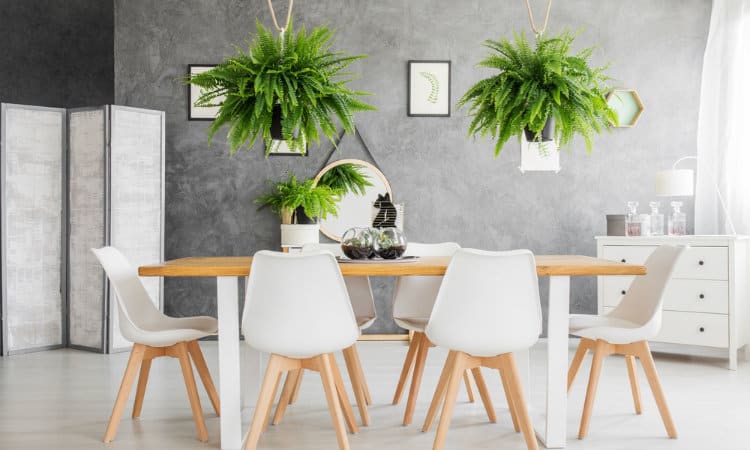
Ferns have a lot of surface space to help reduce sound. Their wide leaves spread out and cover quite a bit of area. I love the look of ferns, so it was a win-win for me. Ferns are a pretty dense plant as well, and they do a great job of absorbing the noises in my loudest room.
I like to place them near the corners where they can trap sound from a variety of angles. They help to absorb sound and they are great at deflecting sound into the plants that surround them.
Baby’s Tears (Helxine Soleirolii)

Baby’s Tears are a dense plant that looks almost like moss. The plant has a way of draping itself over the pot, and makes a great sound reducer when elevated off the ground.
I experimented with a few different placements for these plants and I found that they are the most effective when hung higher off the ground.
The problem with this is that they are missing a large part of the room where sound can easily be reflected. I hung mine lower from the ceiling which allowed the plants to hang down and catch the areas that non-hanging plants miss.
Peace Lily

The peace lily is a great sound absorbing plant you can put in your home. Their true noise absorbing properties are in their thick, broad leaves.
The thick leaves help with all three sound absorbing properties. I found that these plants are extremely easy to care for and they don’t require too much upkeep.
They absorb some of the sounds with their leaves and do a great job of bouncing the sound to the other plants I placed around the room as well. This is by far one of my favorite noise reducing plants.
Rubber Plants (Ficus Elastica)
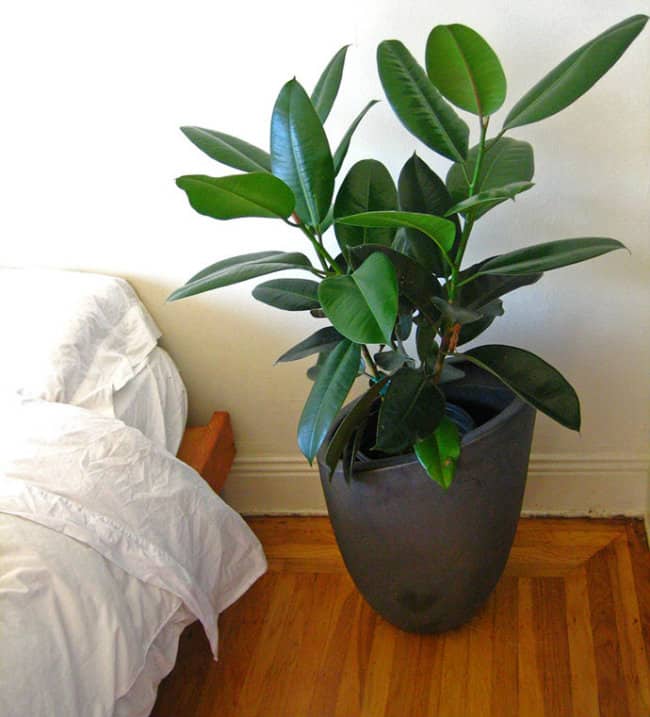
Rubber plants are often tall. They can grow up to three feet and have broad, thick leaves that reduce noise.
The beauty of this plant is just how big it can get. Rubber plants cover a large surface area which only serves to enhance their sound absorbing properties.
I found that I could place them in a large pot, right on the floor anywhere around the room. The combination of the leaves and size acted as an acoustic wall of sorts. Because of their size, you don’t need too many of these to feel the effects of their ability to block out the noise.
Weeping Fig
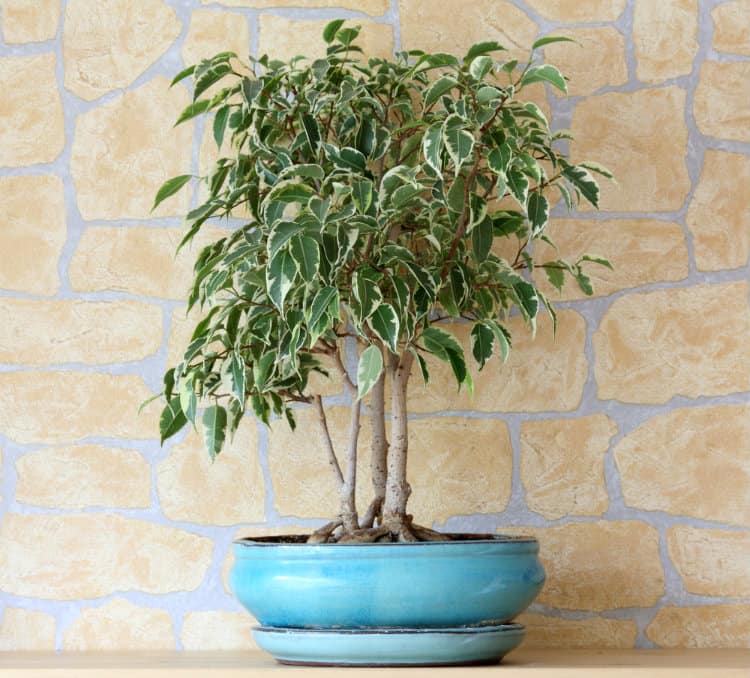
Weeping Fig plants are excellent noise blockers because of how dense the plant is. Look at it this way, the more density a plant has, the more it can block out the noise.
The plant has some thick, arching branches that help to give it a full appearance. The branches and leaves combined are great at absorbing the sound.
I placed a couple of these on stands to fill in the middle area of my walls where I was noticing I had some gaps. The sound would bounce off the walls and these plants would just eat it up. No ringing, no echo, and a solid plant for helping reduce noise.
Norfolk Island Pine

Remember my analogy about walking in a quiet forest? Pine trees are great at reducing sound, and the Norfolk Island Pine is an excellent addition to your noise reducing plant collection.
The pine needles grow out in a crisscross pattern. What this does is to help trap the sound within the plant itself. Their needles might seem small, but the surface area that they cover aids in their effectiveness as a noise blocker.
Fiddle Leaf Fig

The fiddle leaf fig is another plant with broad, thick leaves. They can grow tall, and the cupped shape to the leaves make for an effective sound absorber.
The bottom of the tree is narrow, so they work best when placed in an area where they are surrounded by other plants that will fill in the bottom area where sound can get through.
Since they grow tall, set the pot on the floor and let the large leaves stretch up where they will do a great job of catching sound in the middle wall area.
Areca Palm
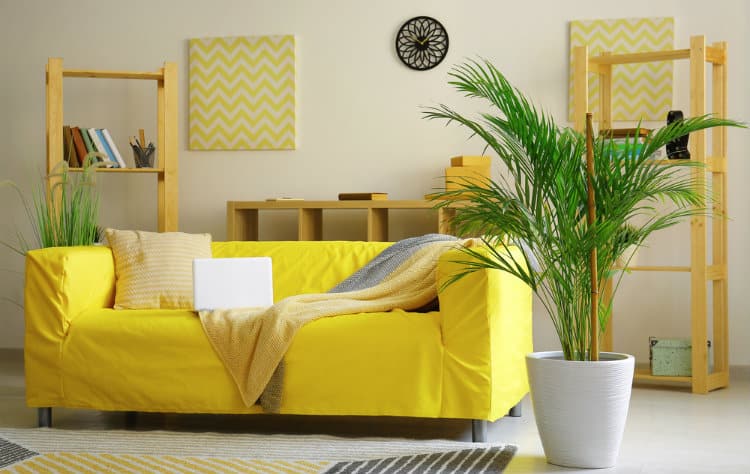
Palm trees are known for their broad fronds. These plants can stretch out and fill in areas that might be difficult to cover otherwise.
They are dense at the bottom which helps to deflect the sound up into the fronds. These plants cover a large surface area since the fronds like to spread out, especially as they grow larger.
These plants are good as a standalone plant if you have an area that needs some sound absorption and don’t have a lot of space for multiple plants.
Dracaena Janet Craig
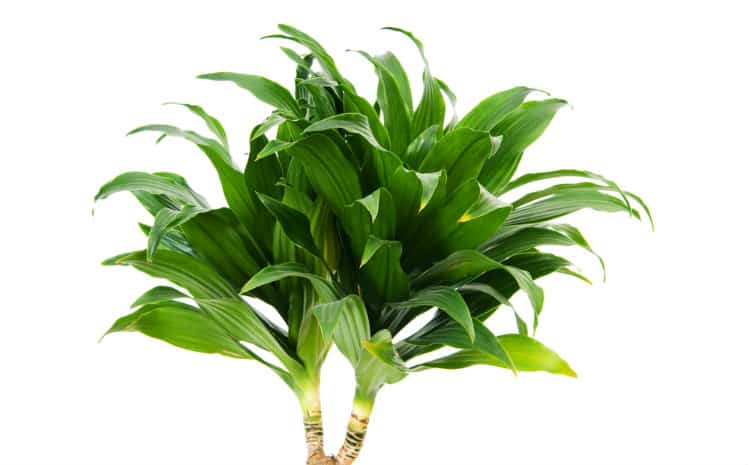
These plants are excellent sound absorbers because they are dense from top to bottom. The leaves of the plant start to spread out from the base up to the top.
Since the leaves tend to drape down, they help to cover a pretty wide surface area. When sound hits a Janet Craig plant, it bounces around inside the plant. Ultimately, this is what you want.
The sound will get in, but it won’t get out. Since the leaves do such a good job of absorbing sound, you don’t need too many of these. I found that the one I used in my room was more than enough.
Money Tree (Pachira Aquatica)
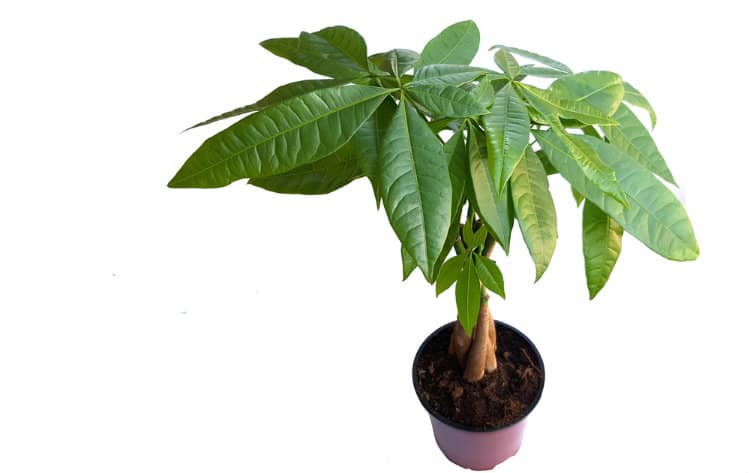
Money tree plants are great filler plants for areas where you need a little more coverage. They have a very thick stalk that helps to push sound up into the wide leaves.
You can plant these as a single or as multiples in one pot. The leaves on these like to stretch out like a canopy. Any sound that finds its way up into the canopy of these plants gets trapped inside like an umbrella.
I used a couple of these in my room to fill in spaces where I didn’t want a huge plant, or make my room look like a rainforest.
How Else Can I Reduce Noise
There are other ways to reduce noise in your home as well. There are soundproofing curtains that can help absorb the sound. There’s a reason why movie theatres have curtains inside.
Another item I like is floor underlayment that goes under wood or laminate flooring. When I installed my new laminate flooring, I put some of this as the base layer over the concrete and under the flooring. This helped to reduce the amount of sound that used to echo from the floor.
A very easy fix is to get some soundproofing weather stripping to go around your windows and doors. I did this recently and saw a nice reduction in the absorption of sound in that particular room.
Related Questions
Are plants affected by noise? Most house plants aren’t overly affected by noise. There are some cases where too much ambient noise can limit the overall growth of a plant, but for the most part, plants are resilient and can withstand quite a bit of noise without any negative effects.
Related posts:



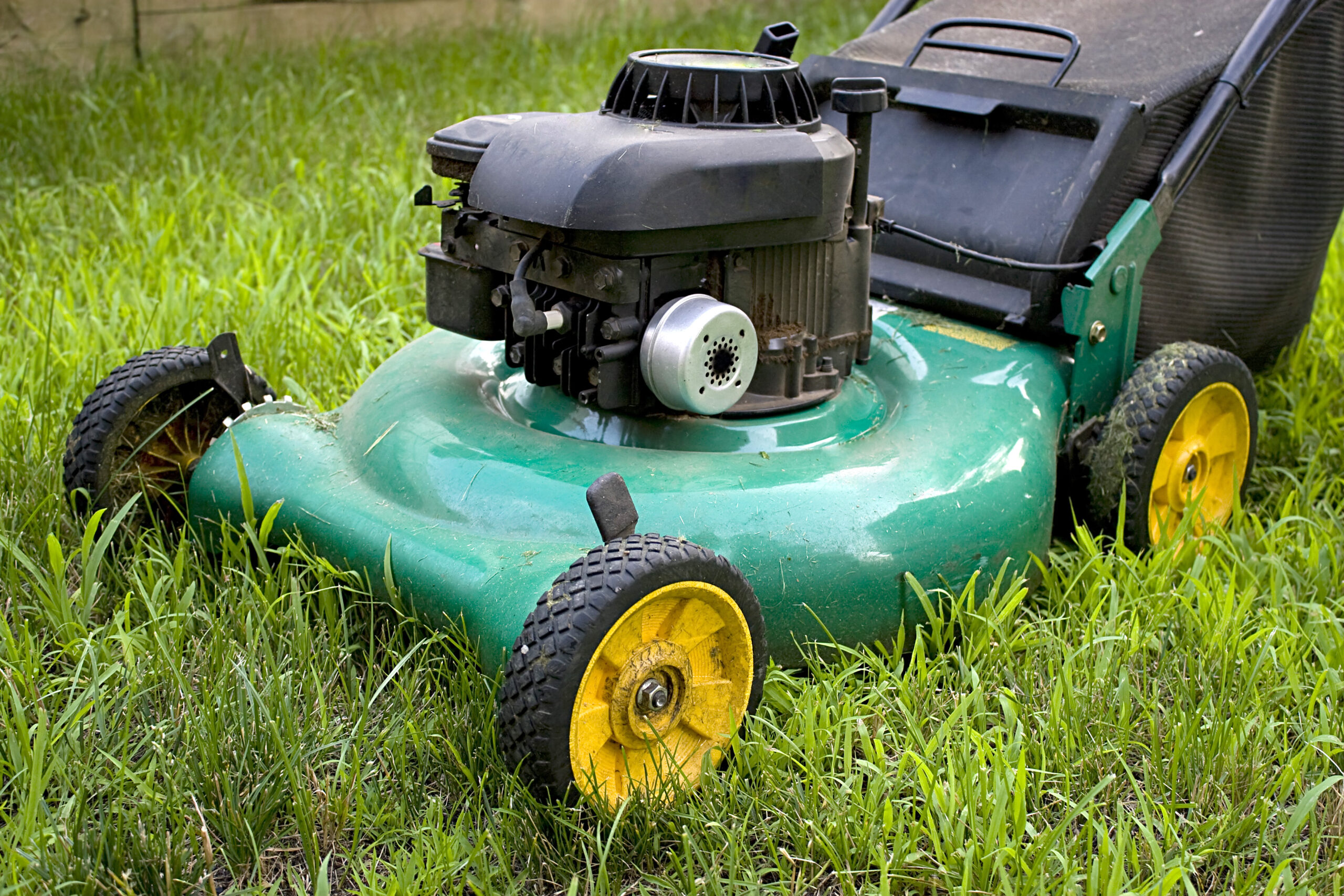

Thank you for your well written and informative article. It has given me some really good ideas and I will experiment with the plants that you suggest. Just the sort of advice that I was looking for.
thank you Eugene, for sharing your experiences, the tips and advice’s. However, I have a question on quantifying the reduction of noise using different indoor plants or their combinations. Any pointers towards this is a great help
Awesome information. Saved me hours of research as the article answers everything.
Thank you for taking the time to make this.
Hi Martin,
Thanks for the kind words. Glad it was helpful.
Terry
I live on a street that is busy. In the winter it is not a problem but in good weather we like our windows open, especially in our bedroom.. Any suggestions for blocking out street noise? Love the idea of plants, never even thought of that.
Thank you, Paula
Hi Paula,
Check out our article How to Reduce Traffic Noise in Your Backyard. You will find more ideas there including plants, berms, fences, some ideas that absorb noise, and some that deflect noise up and over.
Terry
Thank you Eugene. This is very informative and awesome. I will try them soon. Hope that they can last Long and work for me.
Hi Jacqueline,
Glad to be of help.
Terry
Would artificial plants help with noise reduction? I oversee a neighborhood clubhouse with terrible echoes and am trying to develop a comprehensive plan for addressing our noise problem.
Thanks for any advice/ guidance you can provide,
Hi Tina,
Yes they will help with your echo problem. They will not absorb much sound but they will help break up standing waves if they are tall enough. Standing waves are part of the echo problem. Taller plants are better.
You may also want to consider some foam acoustic panels on the wall. Depending on the panel, they can absorb up to 90% of the sound waves. Optimum coverage is approximately 30% of the wall area. The panels are not terribly expensive, and they are very effective. For more information please see our article The Best Acoustic Foam Panels of 2022.
Terry
Hi Eugene,
Iam so grateful for this bit of information. I stay in apkace where there are lots of traffic and railway noises and it is affecting my wellbeing. I hope to implement the your suggestions.
Hi Veda,
Hope it works well for you.
Terry